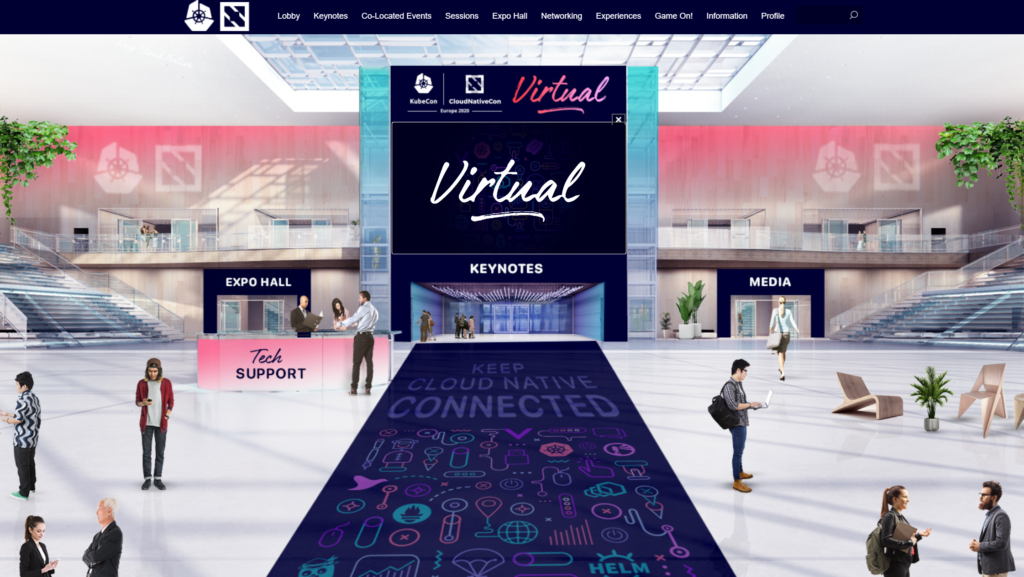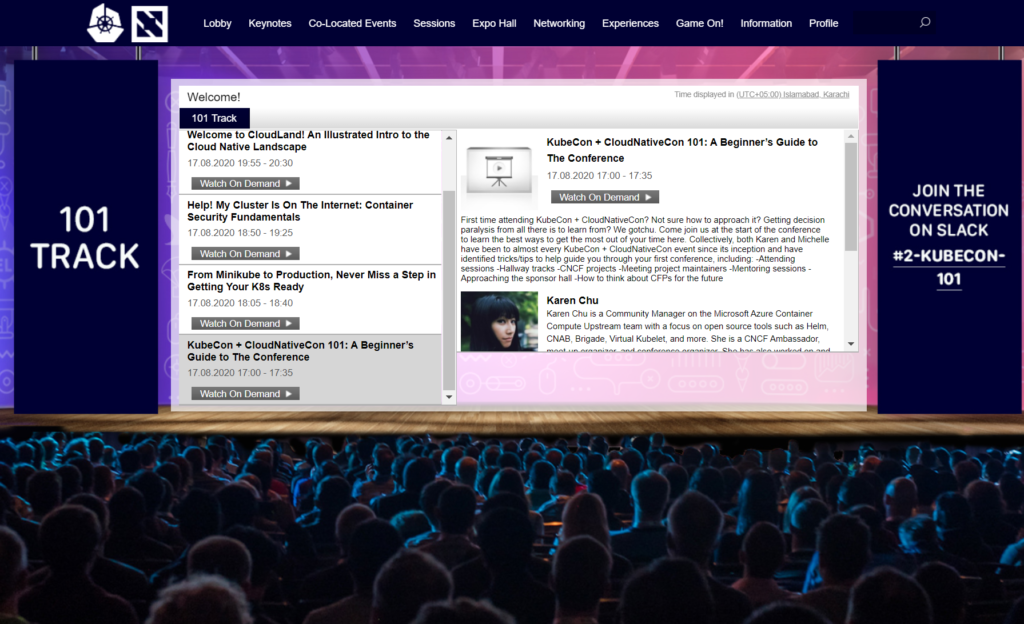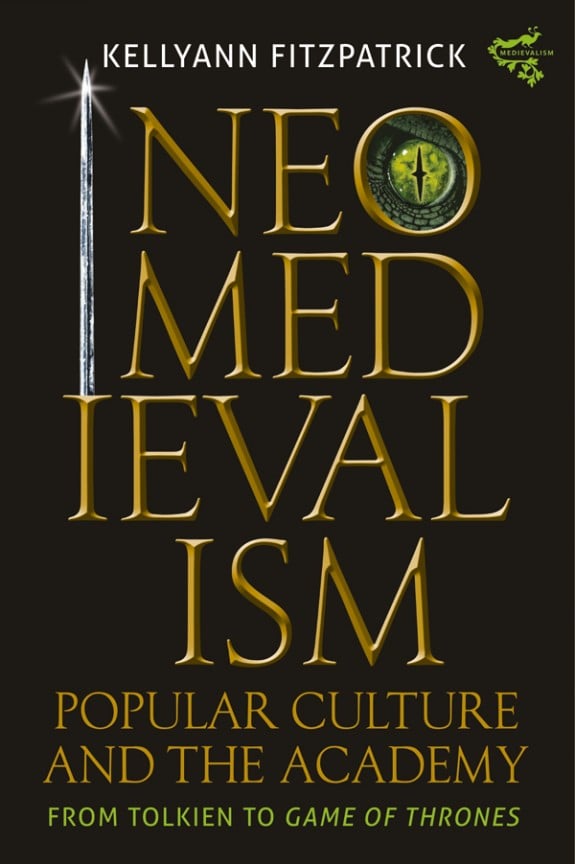
In an alternate 2020, I would have attended KubeCon + CloudNativeCon Europe in Amsterdam in late March. In that universe I would have found myself speed walking from keynotes to vendor meetings, then to analyst events and, hopefully, some nice bars with my RedMonk colleagues and the RedMonk Beers crowd. I would have attempted to publish a post for each day I attended the event, as I did for the 2019 KubeCon + CloudNativeCon in San Diego, and those posts would have been fueled by delicious pastries and proper cafe settings.
But this our 2020. And we are all conferencing from home.
As my colleagues and I have already noted in our discussion of the first slew of events that moved online due to the COVID-19 pandemic, with the shift to virtual events it is rare to have the opportunity to dedicate multiple whole days to a given event. Nevertheless, last week I managed to carve out some part of each day to dedicate to the first virtual KubeCon + CloudNativeCon. Here are my top takeaways.
KubeCon + CloudNativeCon benefitted from earlier virtual events.
The downside of having postponed from March to August (initially as an in-person event before moving to a virtual format) is that KubeCon + CloudNativeCon Europe took place during the period when a lot of folks living in Europe are traditionally out on PTO. The upside is that it gave conference planners ample time to observe reactions to earlier virtual tech events and to adjust accordingly.
The conference used the INXPO platform (in places branded as “Intrado”), which allowed for session delivery, schedule viewing and agenda setup, a virtual expo hall, and various other activity categories (such as “games” and “experiences”).
Day 0 at #CloudNativeCon + #KubeCon. CNCF has done a great job with their virtual platform. Here we go🚀🚀!! pic.twitter.com/KefWQta2mX
— sam🦇🔊 (@proofofzen) August 17, 2020
Attending @KubeCon_ virtually this year!#KubeCon #KubeconEu #CloudNativeCon pic.twitter.com/1Jh8DxO8WN
— Akanksha Bhasin (@Akii_20) August 17, 2020
The conference also leveraged carefully organized channels in the CNCF slack to simulate audience participation and hallway track interaction. There were channels for keynotes, for co-located events, even for sharing pet pics, and repeated encouragement from speakers to attendees to use the slack channels to introduce themselves, their interests, and their questions. Vendors were also able to use slack channels to funnel attendees into zoom demos and conversations.
At today's #KubeCon keynote: @oicheryl welcomes first-time attendees and encourages folks (especially first-timers) to introduce themselves and their interests.
I love the directive to "not be a passive consumer" and to "share what you know" at this event. pic.twitter.com/XS7oBC9VyI
— Dr KellyAnn Fitzpatrick (@drkellyannfitz) August 18, 2020
Most of the sessions were a combination of pre-recorded talks and Q&A that ran live at the end of each session’s scheduled run time. Afterwards the sessions were available on demand. Based on what I have seen at earlier virtual events that have used different methods (all live, with replays unavailable until days later; all recorded and on-demand), this is a solid gameplan. Pre-recording the talks minimizes live SNAFUs and gives presenters greater control over their content. The live Q&A adds value to tuning in for the initial broadcast. Making sessions available soon after they wrapped gives attendees great flexibility when attending around other work or home obligations, or from different time zones. To my mind, this is the best of all worlds.
Kudos to the CNCF for incorporating a virtual version of Keep Cloud Native Well, with onsite events replaced with on-demand meditation and “chair yoga” video sessions to help remind folks to take a break from their screen (something that I certainly needed). While not every experience translates as well to virtual (puppy cams are great, but they are nothing compared to snagging a few minutes of actual in-person puppy time, especially in the middle of a very full day of tech talks), it is heartening to see online events continue to seek out ways to improve upon the virtual conference experience.
Time no longer exists (except when it does).
As events welcome exclusively virtual attendees, (and the time warping effects of COVID-19-related social isolation become more sustained) it becomes harder to expect attendees to operate within (or even near) a given time zone. Conferences have adjusted to this in various ways by making their program listings configurable by timezone; by scheduling content to premier at all hours; or by attempting to serve multiple time zones at once. (Note: some events still neglect to put any time zone information on their schedules whatsoever; this is a personal pet peeve of mine).
This iteration of KubeCon, although nominally targeting Europe, scheduled most of its keynote programming so that it was at least possible for attendees based on the east coast of North America to attend without too much of a caffeine bump (with a 9:35 am EDT keynote kickoff). This translated to a 3:35 pm start for attendees in the conference’s stated default time zone (CEST): leaning towards the end of the day, but far preferable to the 6:35 am start time for folks in PDT.
The ability to replay missed sessions offered attendees in all time zones the ability to catch up on sessions they could not catch when they initially aired. Even so, the appeal of watching a session when it first airs–with live Q&A and complementary slack chat–can be a big draw. And for this reason, many folks (myself included) found themselves up bright and early.
5am wake up. #KubeCon
Here we go! pic.twitter.com/nSFPgcT7Af— Nanci Lancaster (@Microwavables) August 16, 2020
Cold brew to kick off #KubeCon. Awesome job @linuxfoundation events team! pic.twitter.com/ZsQenwK5Gk
— Cheryl Hung (@oicheryl) August 17, 2020
hi i'm at #KubeCon #CloudNativeCon (and I'm sleepy. I'm really sleepy. watching tech talks before 10am is…. hardcore.) pic.twitter.com/dXGf8n6neQ
— bia (@__biancarosa) August 18, 2020
Up early again to watch @csanchez and @vfarcic talk "Progressive Delivery in Kubernetes" at #kubecon (and I love the shout-out to @monkchips)! pic.twitter.com/tj7zFmjZNB
— Dr KellyAnn Fitzpatrick (@drkellyannfitz) August 18, 2020
Day 0 events have virtual value.
For an in-person conference, the main advantage co-located events offer attendees is the opportunity to wring an additional event out of the travel involved for the main conference. For the cost of a modest registration fee plus an extra night’s hotel, you not only attend KubeCon but also a full day of more specialized Day 0 programming suited to your interests. With all things moved to virtual platforms, the shared location aspect of co-located events is null and void, and the events themselves often compete with the conference itself for our limited attention spans. What, then, is the value in a virtual Day 0?
As with the onsite co-located events, last week’s Day 0 events were still a nice way to ease into the three-day main event. Once you’ve chosen a co-located event, the content is curated for you (although the virtual format also means that you could register for and attend multiple co-located events, all without running from venue to venue). With the variety that is KubeCon + CloudNativeCon programming proper, it is almost a luxury to be able to focus on a given topic.
I, for one, got a lot out of the Serverless Practitioners Summit, although with time zones and intermittent client meetings, I consumed it via a mix of live streaming on Day 0 proper and on-demand replays in the days that followed.

In addition, for first-time attendees (and perhaps also for first-time virtual attendees), Day 0 offered time to become familiar with the platform (and slack channels) and figure out how to navigate the labyrinth of sessions and terminology that KubeCon can be. The conference also ran a “101” track, which it made available on Day 0 to help attendees understand the conference itself as well as some introductory topics.
omg I am so overwhelmed by the positive reaction to our session "A Beginner's Guide to #KubeCon + #CloudNativeCon". Seeing these people say they feel welcome in the community is giving me all the feels. @karenhchu pic.twitter.com/o3a8FjJmU8
— Michelle Dhanani (@michelledhanani) August 17, 2020
The CNCF does a great keynote lineup.
From what I saw in San Diego this past fall, the CNCF has a knack for recruiting excellent keynote speakers and creating an energetic and enthusiastic keynote atmosphere. (Exhibit A: check out Ian Coldwater’s Day 3 keynote from the San Diego event, one of my favorite talks and the best reason ever to get a copy of Untitled Goose Game). This translated surprisingly well to the virtual format.
Uplifting #kubecon keynote message from @pritianka – "our lives have gone remote – our challenges have gone global". 💯 pic.twitter.com/76nJNJnYMO
— Bridget Kromhout (@bridgetkromhout) August 18, 2020
Amidst the usual announcements and project updates, keynote talks that stood out for me:
- “End to End: The Foundation of Doers,” Priyanka Sharma (General Manager, Cloud Native Computing Foundation). Sharma joined the CNCF only a few months ago (and during a pandemic) yet brought an energetic and uplifting tone to her talk. She also dropped some impressive numbers from the most recent State of Cloud Native Development report (6.5 million cloud native developers!)
- “Open Source Intrusion Detection for Containers at Shopify,” Shane Lawrence, Senior Security Infrastructure Engineer, Shopify and Kris Nóva, Chief Open Source Advocate, Sysdig. The talk focuses on Falco (an incubating CNCF project), but Lawrence and Nóva structure it as an engaging narrative about how Shopify uses Falco.
- “The Beginner’s Guide to the CNCF TOC,” Liz Rice, VP Open Source Engineering, Aqua Security. Rice gave a great primer on the Technical Oversight Committee, clearly explaining why the CNCF needs to be able to say “no” to projects, and also why it needed a more streamlined Sandbox approval process.
- “How to Love K8s and Not Wreck the Planet,” Holly Cummins, Worldwide IBM Garage Developer Lead, IBM. Cummings talked about tech and climate change, including carbon emissions, kube sprawl, and zombie workloads. It is the talk we need in 2020.
There was so much expertise. And, while I did not notice until after the fact (b/c I was so into the content), a strong lineup in terms of representation.
So wonderful to see so much diversity on the keynote stage on #Day1 at #KubeCon2020, great opening keynotes by new GM @pritianka and @oicheryl, hit all the right notes
— 🌍Diane Mueller 🇨🇦 @[email protected] (@pythondj) August 18, 2020
It is also important to note how adeptly conference co-chairs (and keynote MCs) Vicki Cheung (Engineering Manager, Lyft) and Constance Caramanolis (Principal Engineer, Splunk) adapted the traditional onsite MC gig into MC-ing from home. They not only only welcomed us to the event, introduced the other speakers who appeared on the keynote lineup, and delivered their own technically expert Day 3 keynote content; they also helped us navigate non-intuitive activities like “clapping for a really good talk via slack” and reminded us to check out conference experiences (games, virtual swag, photo booths) designed to help us interact with each other. Most importantly, as per what should be common conference protocol going forward, they shared their adorable pets.
The real stars of the event Omicron and Coda!! https://t.co/XSFaDPxMNl
— Constance Caramanolis (@ccaramanolis) August 20, 2020
There is (as yet) no replacement for RedMonk Beers.
Conference planners, as I note above, put a lot of effort into making the first virtual KubeCon an enjoyable experience. Attendees and sponsors also did their part in coming up with useful ways to translate typical conference experiences to the virtual realm. There were conference games:
Cards Against Containers for a cause hosted by @sysdig! This going to be fun! 🥳 #CloudNativeCon+#KubeCon! Awesome players! pic.twitter.com/bJ0KqrFIkR
— Kasper Borg Nissen (@phennex) August 17, 2020
And swag:
Instead of making my usual fun swag for #KubeCon bc of obvious reasons, I tried a different thing this time…😬
🕵️♀️ learn or test your knowledge of the @kubernetesio ecosystem w/ my word search & crossword puzzles! You can find them @ the @Azure booth 🕵️♂️ here are some previews👇 pic.twitter.com/UfeywR11cG
— Karen Chu (@karenhchu) August 18, 2020
And booth duty:
https://twitter.com/itarchitectkev/status/1295686637893156866
I applaud these efforts. I hope that even when we can all travel again, we still find a way to keep virtual conferences in our events lineups, as there are many benefits (e.g., access, smaller carbon footprint, not having to get on planes).
And yet, for me there is just no replacement for the valuable face-to-face conversations that happen at these events: the hallway track, the client meetings, the run-ins at nearby cafes, and the catch-ups with friends and colleagues. As of yet I have found no replacement for RedMonk Beers, but that will not stop me from trying.
It is not quite @RedMonk Beers, but I am celebrating the last day of #KubeCon with my most recent @Monktoberfest glass and some @BissellBrosBrew. pic.twitter.com/GQ9n4Cn2Fv
— Dr KellyAnn Fitzpatrick (@drkellyannfitz) August 20, 2020
Disclosure: The CNCF (via the Linux Foundation) is a RedMonk client and comped my ticket to this event. IBM and Splunk are also RedMonk clients.

No Comments